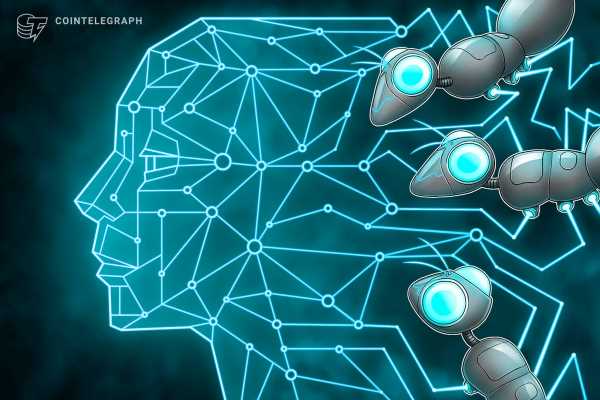Researchers at the University of Texas at Austin have developed an artificial intelligence (AI) system capable of interpreting and reconstructing human thoughts.
The scientists recently published a paper in Nature Neuroscience exploring using AI to non-invasively translate human thoughts into words in real time.
According to the researchers, current methods for decoding thoughts into words are either invasive — meaning they require surgical implantation — or limited in that they “can only identify stimuli from among a small set of words or phrases.”
The team at Austin circumvented these limitations by training a neural network to decode functional magnetic resonance imaging (fMRI) signals from multiple areas of the human brain simultaneously.
https://www.youtube.com/embed/Fj6Z2rBeWuE
In conducting this experiment, the researchers had several test subjects listen to hours of podcasts while an fMRI machine non-invasively recorded their brain activity. The resulting data was then used to train the system on a specific user’s thought patterns.
After the training, test subjects had their brain activity monitored again while listening to podcasts, watching short films and silently imagining telling a story. During this part of the experiment, the AI system was fed the subjects’ fMRI data and decoded the signals into plain language in real time.
According to a press release from the University of Texas at Austin, the AI was able to get things right approximately 50% of the time. The results, however, aren’t exact — the researchers designed the AI to convey the general ideas being thought about, not the exact words being thought.
Fortunately for anyone concerned about having their thoughts infiltrated by AI against their will, the scientists are very clear that this isn’t currently a possibility.
The system only functions if it’s trained on a specific user’s brainwaves. This makes it useless for scanning individuals who haven’t spent hours providing fMRI data. And even if such data was generated without a user’s permission, the team ultimately concludes that both the decoding of the data and the machine’s ability to monitor thoughts in real time require active participation on the part of the person being scanned.
However, the researchers did note that this might not always be the case:
“[O]ur privacy analysis suggests that subject cooperation is currently required both to train and use the decoder. However, future developments might enable decoders to bypass these requirements. Moreover, even if decoder predictions are inaccurate without subject cooperation, they could be intentionally misinterpreted for malicious purposes.”
In related news, a team of researchers in Saudi Arabia recently developed a method for improving precision in diagnosing brain tumors by processing MRI scans through a blockchain-based neural network.
In their paper, the Saudi researchers demonstrate how processing cancer research on a secure, decentralized blockchain can improve precision and reduce human error.
Related: What is Immutable, explained
While both aforementioned experiments are cited as early work in their respective research papers, it’s worth noting that the technology used in each is widely available.
The AI underlining the experiments conducted by the team at the University of Texas at Austin is a generative pre-trained transformer (GPT), the same technology that ChatGPT, Bard and similar large language models are built on.
And the Saudi Arabian team’s cancer research was conducted using AI that was trained on Nvidia GTX 1080s, GPUs that have been available since 2016.
Realistically speaking, there’s nothing stopping a clever developer (with access to an fMRI machine) from combining the two ideas in order to develop an AI system that can read a person’s thoughts and record them to the blockchain.
This could lead to a “proof-of-thought” paradigm, wherein perhaps people could mint nonfungible tokens (NFTs) of their thoughts or record immutable ledgers of their feelings and ideas for posterity, legal purposes or just bragging rights.
The impact, for example, of thought-to-blockchain NFT minting could have implications for copywriting and patent applications where the blockchain serves as proof of exactly when a thought or idea was recorded. It could also allow celebrity thinkers such as Nobel laureates or contemporary philosophers to codify their ideas in an immutable record — one that could be commoditized and served as collectible digital assets.
Source: Read Full Article
